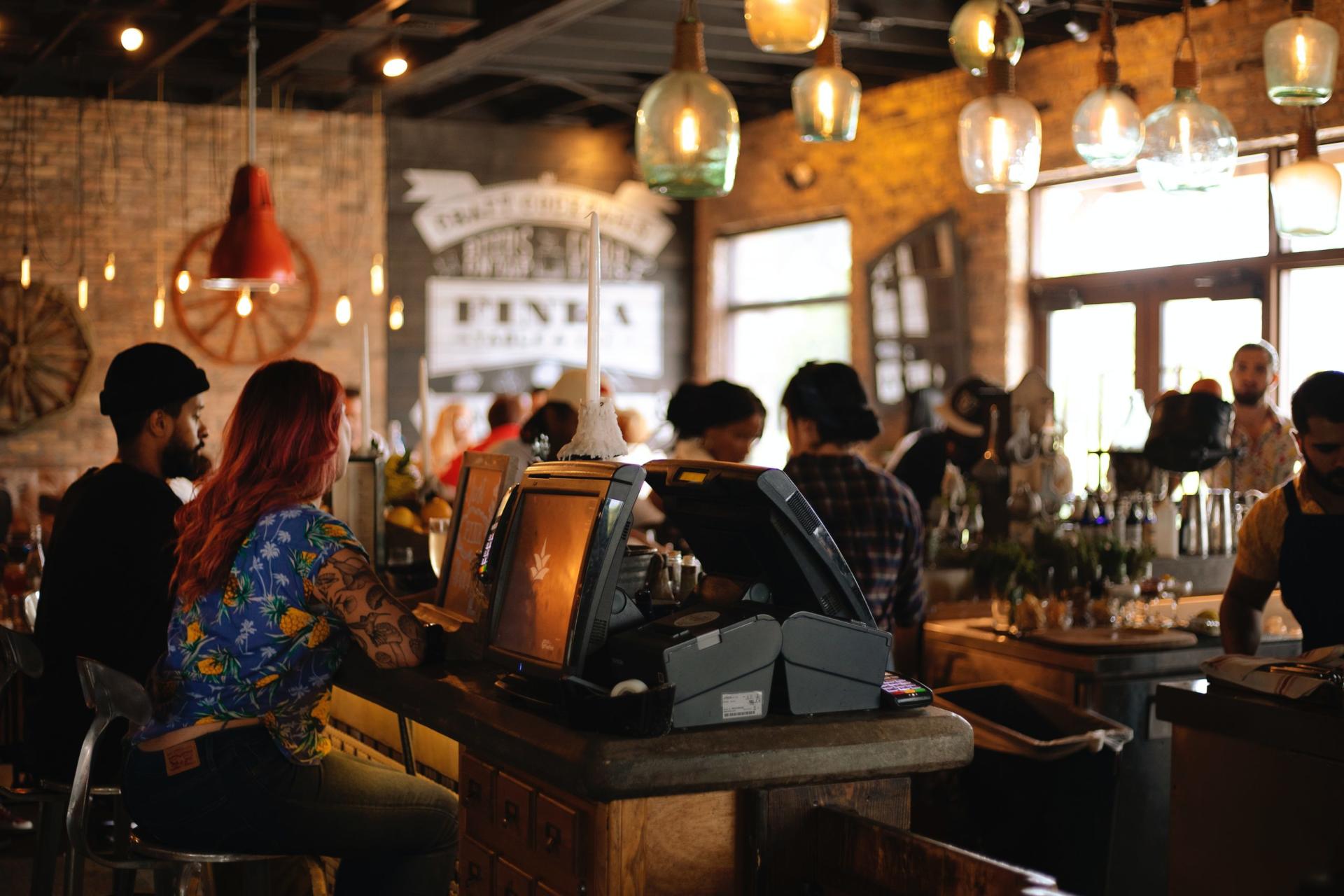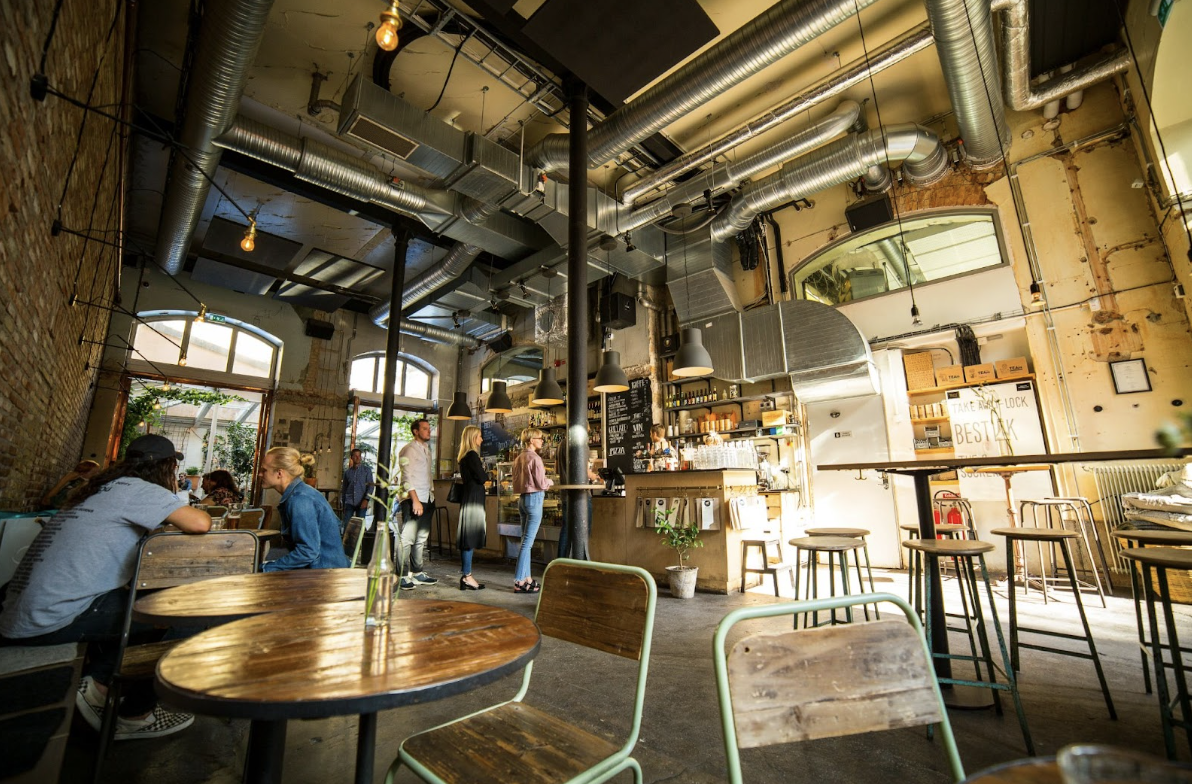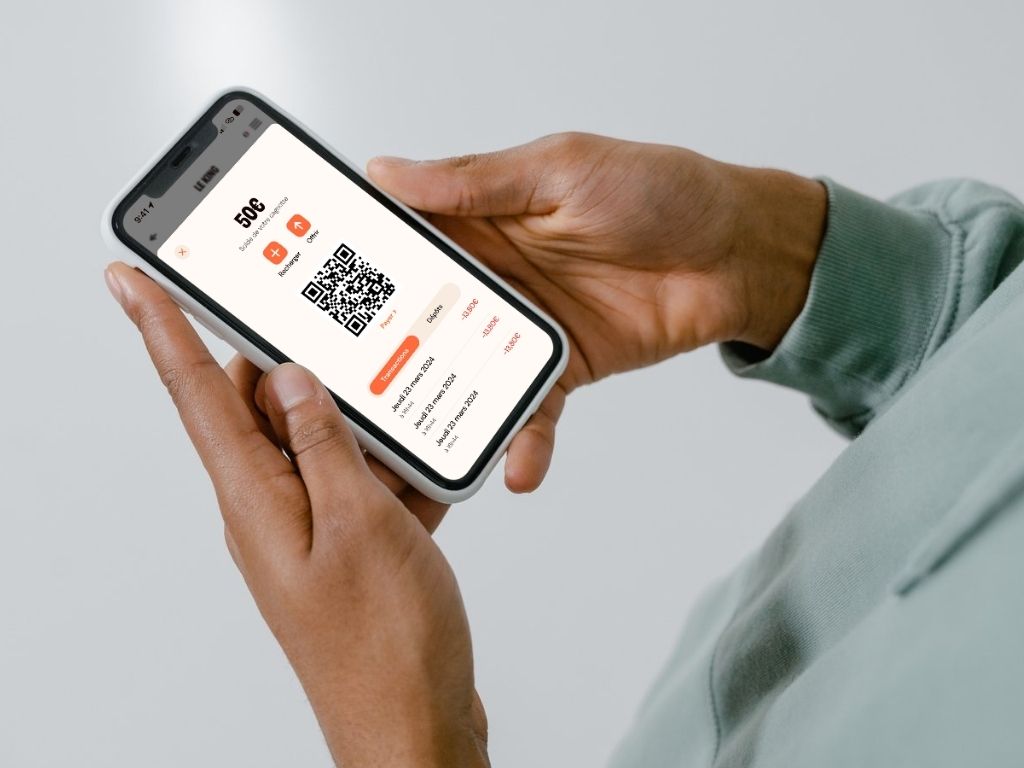2025: the guide to restaurant trends
27 January 2025
As you can imagine, AI will be on the menu in this guide.
In 2024, this acronym has taken our discussions, our tools and even our kitchens by storm. Personalized recommendations, automation, optimized management... Artificial intelligence is emerging as a key future ally for restaurateurs.
But to reduce the major trends to AI alone would be to miss out on an entire ecosystem in full transformation. New technologies, customer expectations and the search for simple - but memorable - experiences are shaking up industry codes.
To get a clearer picture, we explored the innovations and took a step back from the changes underway.
Objective: offer you a clear vision of the trends that will reshape the industry in 2025to better anticipate what's coming.
In this guide, we review everything from tools that make day-to-day management more fluid, to ideas that reinvent the customer experience, to strategies that could well become tomorrow's must-haves.
01. Immersive culinary experiences
The return of theme restaurants
Themed restaurants are nothing new, but in 2025, they're back in the spotlight with ever bolder concepts. And we're not just talking about stylized decors: they offer complete immersion, from the menu to the soundscape, to transport customers into a timeless universe.
Why does it work?
➜ Escape from a saturated daily routine: customers are looking for places that offer a break, a complete change of scenery.
➜ The power of memories : a memorable experience that stays with customers. They come back to relive this unique moment or share it with their loved ones,
➜ A lever for social networks : themed restaurants are magnets for Instagrammable content (more on this later)
The team's favorite addresses
The rise of multi-sensory concepts
While themed restaurants rely on immersive décor, multi-sensory concepts go even further, engaging all the senses of customers.
Why does it work?
➜ A total experience: sensory impact goes beyond the visual. Smells, sounds and textures influence taste perception and make for an unforgettable experience.
➜ A differentiating approach : In a competitive market, multi-sensory restaurants offer a unique advantage, attracting the curious and lovers of new experiences.
➜ An emotional anchor: these experiences touch customers' deepest feelings, connecting them more intensely to the establishment.
The team's favorite addresses
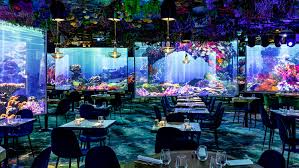
02. The digital revolution comes to the table
AI at the service of the customer experience
In 2025, artificial intelligence will be a mainstay of Foodservice 2.0.
Thanks to data collection and analysisAI enables us to anticipate customer needs, improve service and innovate in day-to-day management.
Why does it work?
➜ Personalized recommendations in real time : AI analyzes customer preferences based on their order history and context (time, weather, trends). The end result: hyper-relevant suggestions, such as an ice cream in summer, at snack time, or a hot drink in bad weather.
➜ Better flow control: AI tools can predict peak times (lunchtimes, special evenings, weekends) and adapt human and material requirements accordingly. (No more service interruptions!)
➜ Enhanced customer loyalty : AI can send personalized offers (discounts, gifts, birthday promotions), giving customers an extra reason to come back.
Find out more
Optimized management thanks to digital tools
In 2025, automation will play a central role in optimizing restaurant management, particularly for key stages such as order-taking, payments and flow management. These technologies help to streamline operations, deliver a better customer experience and make up for staff shortages in a sector that is often under pressure.
Why does it work?
➜ A smoother customer journey : with QR codesyour customers scan, order and pay directly from their phone.
➜ A solution to the labor shortage : At a time when the sector is struggling to recruit, automation is becoming an ally in maintaining service quality and speed.
➜ Simplified, connected management : everything is synchronized in real time with your management tools. You get an overview of your business, without having to pile up shelves in the kitchen.
Find out more
Rethinking the customer journey with order terminals
We no longer present control terminals. In just a few years, they have been democratized, major chains to independent establishments.
In 2025, these tools will continue to evolve, adding new features to meet customer expectations while making management easier for teams.
Why does it work?
➜ A smoother customer experience: kiosks reduce queues and allow customers to order at their own pace, without pressure.
➜ A flagship tool for boosting sales : with "product push" options, they automatically recommend side dishes, desserts or drinks to increase the average ticket.
➜ Universal accessibility: available in several languages, they are aimed at an international clientele.
Our customers have adopted them (and loved them!)
➜ Discover the success stories of Krispy Kreme & 10.55
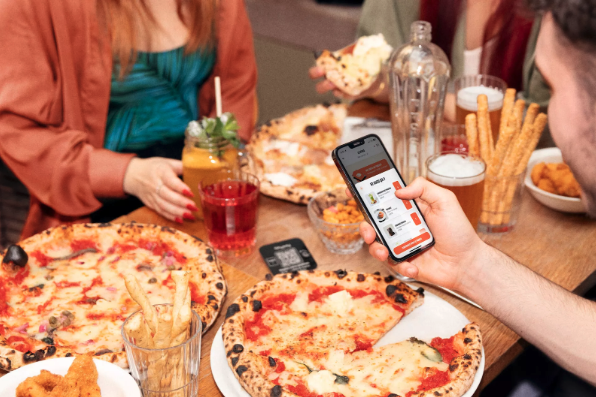
03. Menu customization and flexibility
Offers hyper-tailored to consumers
In 2025, personalization and flexibility are becoming the norm. Restaurateurs who know how to adapt to this demand will see their clientele grow, develop loyalty and, above all, return. Offering hyper-customized menus shows that you're listening to your customers and committed to satisfying everyone.
Why does it work?
➜ A lever for differentiation : by personalizing the customer experience, you stand out from the crowd. In a market where offers are often similar, offering customized options gives your restaurant a competitive edge.
➜ A pledge of loyalty: a customer who finds an offer adapted to his needs is a returning customer. They know they can count on the company to provide a tailor-made solution.
➜ A marketing asset: Clearly displaying personalized options attracts a wider customer base, while enhancing the image of an attentive and inclusive restaurant.
The team's favorite addresses
The rise of modular dishes
No more imposed menus! Modular dishes allow customers to compose their meal by choosing every element, from the basic type (rice, pasta, salad) to the garnishes and sauces. This model, popularized by fast-food chains such as Pokawa and Five Guys, appeals for its simplicity and freedom.
Why does it work?
➜ A unique experience: By personalizing their dish, customers feel they are creating something that belongs to them. This involvement boosts their satisfaction.
➜ Upmarket made easy: offering premium options (adding a special topping or homemade sauce) increases the average basket while offering a more qualitative experience.
➜ Operational simplicity: well-designed, digitalized, modular menus are easy to manage in the kitchen, thanks to ordering tools that centralize customer choices.
The team's favorite addresses

04. Healthy and sustainable food
Healthy dishes take center stage
The plate is now synonymous with well-being. Gone are the overly rich menus: "healthy" options are making their mark on everything from fast-food outlets to gourmet restaurants.
Why does it work?
➜ A wide audience : Whether for reasons of health, sporting performance or simply well-being, the "healthy" offer touches all generations.
➜ A new image of pleasure: healthy dishes are no longer seen as bland or restrictive. They become attractive thanks to colorful, gourmet recipes.
➜ A confidence effect: clearly labeled dishes prepared with natural ingredients reassure customers, who want to know exactly what they're eating.
The team's favorite addresses
The rise of vegan, vegetarian and organic dishes
Vegan, vegetarian and organic dishes are no longer reserved for a niche. Driven by environmental and ethical concerns, they are attracting an ever-growing audience, well beyond the followers of these specific diets.
Why does it work?
➜ An ethical and sustainable choice: Reducing consumption of animal products is seen as a concrete way of limiting the ecological impact of our food.
➜ Unlimited creativity: chefs are competing with each other to transform vegetables, cereals and plant proteins into dishes that are as delicious as they are balanced.
➜ A growing market : In France, the number of people adopting a partially or totally vegetarian diet is increasing every year. Restaurant owners who are adapting to this new trend are tapping into this growing audience.
The team's favorite addresses
05. Product transparency and traceability
Storytelling on the plate
Highlighting the origin of products, local producers and manufacturing methods means offering added value that goes far beyond the dish itself.
Why does it work?
➜ A need for transparency: past food scandals have prompted consumers to demand greater clarity on product origin and quality.
➜ A differentiating argument: Highlighting a local market gardener or committed producer creates a unique added value that the big chains can't easily imitate.
➜ Powerful marketing leverage : storytelling attracts the curious, prompts sharing on social networks and builds loyalty among customers sensitive to the values of transparency and ethics. (warning: by 2025 we'll be saying goodbye to greenwashing!)
Good students to watch
Blockchain: guaranteed, easily accessible traceability
Consumers want to know exactly what they're eating: where does it come from? How was it grown or manufactured? In 2025, traceability is becoming a key requirement. And one solution stands out: blockchain. It offers total transparency and strengthens trust between restaurateurs, producers and customers.
Why does it work?
➜ Growing demand : Consumers are willing to pay more for products whose exact route they know, especially Gen Z, who are more aware of environmental and ethical issues.
➜ Total transparency: customers can scan a QR code and access a product's entire history: origin, transport, certifications, production conditions.
➜ Added value for restaurateurs: highlighting the use of blockchain reinforces the credibility and eco-responsible image of the establishment.
Figures to remember
06. Innovative business models
The remontada of dark kitchens
Visit dark kitchens (or "ghost kitchens", but that doesn't sound as good) initially enjoyed a meteoric rise, only to be met with skepticism and criticism.
Today, they're making a comeback thanks to strategic adjustments and a continuing strong demand for fast, efficient delivery.
Why does it work?
➜ Operational flexibility: With no on-site clientele, these kitchens can test new menus, swiftly adapt to changing trends, or pool equipment for several brands.
➜ A response to the needs of customers in a hurry : delivery remains an essential pillar of the sector, and dark kitchens optimize the speed and quality of orders.
➜ Lower operating costs: without a dining room or room service, restaurateurs save on rent and fixed costs.
Sector leaders
Hybrid concepts: food + service
Food court + coworking space, brunch + library, restaurant + games room...
Hybrid concepts are establishing themselves as a new way of experiencing catering. Spaces become living spaces, where the meal break naturally finds its place.
Why does it work?
➜ A "two-in-one" effect: Customers like places where they can eat, work, relax or even entertain, without having to change location.
➜ Space optimization: By diversifying services, restaurateurs maximize the use of their premises throughout the day.
➜ A higher average ticket : customers who consume both food and services spend more.
They trust us (discover their success stories)
Subscriptions
What if, after Netflix and Spotify, you added a subscription to the café downstairs? Inspired by streaming platforms, restaurants are adopting subscription systems to build customer loyalty and secure recurring revenues.
Why does it work?
➜ Adapting to changing uses : Today's consumers are used to subscriptions in other sectors (streaming, gyms, mobility...). Transposing this model to foodservice meets a growing need for simplicity.
➜ Stable revenues : subscriptions smooth out variations in attendance and ensure a more predictable cash flow.
➜ A lever for customer retention : subscription-based commitment encourages customers to remain loyal for longer, even if they use less in certain months. The "I pay therefore I come" effect reduces the risk of them going to the competition.
The team's good plan

07. Digitized meals: freedom and efficiency on the menu
Click & Collect will never die
Although it was on everyone's lips in 2020, no one was betting on its longevity. Born of necessity during the pandemic, this mode of ordering seemed destined to be a temporary phenomenon. Yet, 5 years later, the Click & Collect is still a sales channel not to be neglected.
Why does it work?
➜ It's simple and effective: Order online, collect your order without waiting, avoid delivery charges... Click & Collect is the fast option that ticks all the boxes for customers in a hurry or on a budget.
➜ It's quick to set up: restaurateurs can offer this service in just a few clicks via their own website or a dedicated platform, without heavy investment or complex implementation.
➜ Adaptable to all formats : from fast food to gourmet restaurants, all types of establishment can easily integrate Click & Collect into their offering.
Our customers have adopted it (and loved it!)
➜ Discover the success stories of 3 Brewers andAuguste & Ferdinand
Delivery: cutting out the middleman
Today, everyone agrees that delivery has become essential to stay in the race. But at what price? More and more restaurateurs are seeking to distance themselves from the big platforms, often judged too costly and inflexible, in order to regain control of their margins and customer relations.
Why is it moving?
➜ Regain control of margins : high commissions from large platforms (up to 30 %) weigh heavily on profitability. By developing in-house or white-label solutions, restaurateurs can recoup a larger share of their revenues.
➜ Strengthening customer relations : By cutting out intermediaries, restaurateurs maintain a direct link with their customers, better understand their expectations and can personalize the experience.
➜ Capitalize on loyalty : with proprietary solutions, customer data (preferences, purchasing habits) remain in the hands of restaurateurs, a strategic asset for creating targeted campaigns and building loyalty.
Find out more
08. The impact of social networks and e-reputation
The influence of networks on consumer choices
Can we really finish this tour of trends without talking about social networks? Instagram, TikTok and Pinterest are shaping the way customers choose their restaurants. Even before looking at the menu, they seek out photos, videos and recommendations to validate their decision.
Why does it matter?
➜ A generational reflex: Among the younger generations, consulting social networks before choosing a restaurant has become an almost systematic step.
➜ Social proof: the more a restaurant is mentioned on networks, the more trust it inspires. Photos and reviews from other customers act as social validation.
➜ A discovery tool : Does crookie ring a bell? Viral culinary trends allow consumers to discover establishments they might not otherwise have thought of.
Figures to remember
The importance of customer reviews in your digital strategy
Google, TripAdvisor, Yelp: the customer reviews font (and sometimes undo!) a restaurant's e-reputation. In 2025, establishments can no longer ignore the impact of these platforms on their patronage. If you manage your reviews well, you can be sure of a solid and attractive reputation.
Why does it matter?
➜ An essential digital showcase: reviews are often the first contact between a customer and a restaurant.
➜ A token of credibility: positive reviews boost consumer confidence and encourage them to try out a new establishment.
➜ An opportunity for improvement: customer feedback, whether positive or negative, is a mine of information for improving the customer experience.
Find out more
Setting course for 2025
2025 promises to be a pivotal year for the foodservice industry.
Because beyond trends, what stands out.., is a constant quest for balance between innovation and authenticity, speed and quality, digitalization and humanity.
Those restaurateurs who know how to adapt, while retaining their identity, will have the keys to not only meet expectations, but also surprise and build customer loyalty.
Ready to anticipate these changes and define your goals for 2025? Contact our team today!










